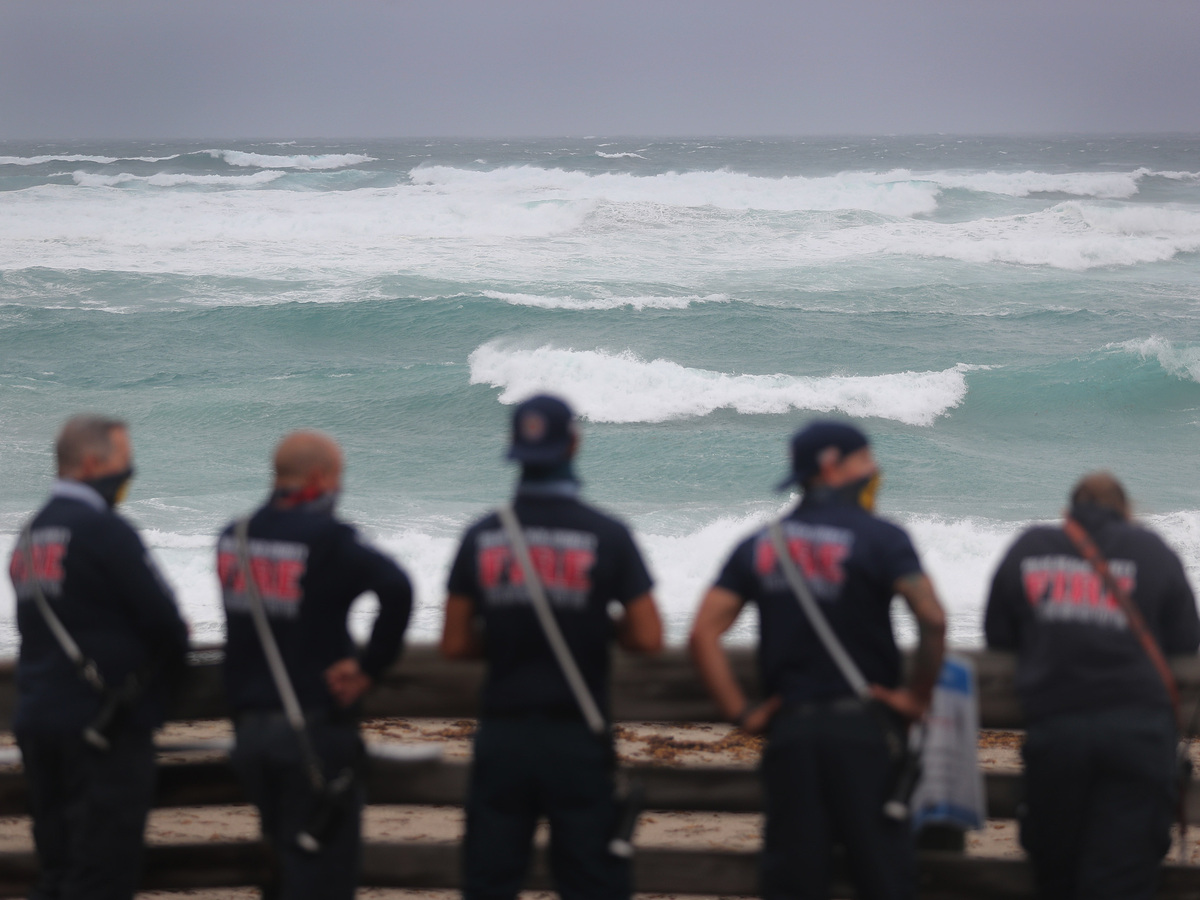
[ad_1]

Palm Beach County Fire Rescue check out the ocean as waves crash ashore from Tropical Storm Isaias as it passes through the area on August 2, 2020 in Juno Beach, Fla.
Joe Raedle/Getty Images
hide caption
toggle caption
Joe Raedle/Getty Images

Palm Beach County Fire Rescue check out the ocean as waves crash ashore from Tropical Storm Isaias as it passes through the area on August 2, 2020 in Juno Beach, Fla.
Joe Raedle/Getty Images
Tropical Storm Isaias is continuing its push toward Florida’s east coast on Sunday after battering the Bahamas with heavy rainfall and gusty winds.
Isaias, which was downgraded to a tropical storm after reaching hurricane status, is whipping up sustained winds of 65 miles per hour and could bring 1 to 7 inches of rainfall from Florida to New England in the coming week, according to the National Hurricane Center.
As of 11 a.m. on Sunday, the center of the storm was situated roughly 55 miles off the Florida coast. The NHC expects the storm to affect the coasts of Florida, South Carolina and North Carolina in the next 36 hours.
The NHC warned that “dangerous storm surge” was possible from the city of Edisto Beach, S.C. to Cape Fear, N.C. The center said water could rise between 2 and 4 feet above ground level along that stretch of coast in the next 48 hours. Storm surge along the coasts of Florida and Georgia could hit between 1 and 3 feet.”
Isaias is expected to remain a tropical storm well into midweek as it tracks up the East Coast. The NHC said that in addition to storm surge, much of the East Coast could see flash flooding and urban flooding as well as ocean swells and tornadoes.
In a news conference Saturday, Florida Gov. Ron DeSantis warned of power outages from the storm’s strong winds. The governor said Florida’s main utility company has 10,000 workers pre-positioned to restore power. But because of the COVID-19 pandemic, it has been more difficult to get out-of-state crews to come into the state, meaning residents could face longer waits for their power to come back on.
DeSantis said nursing homes and assisted living facilities have been checked to make sure they have working generators on site. Palm Beach county issued a voluntary evacuation order Thursday for mobile homes and in areas likely to flood. DeSantis has declared a state of emergency for counties along the state’s Atlantic coast.
As the death toll from COVID-19 continue to rise in Florida, emergency management officials are encouraging people to stay at home or with family or friends and to consider shelters as a last resort. Many shelters say they intend to adhere to new guidelines based on the Centers for Disease Control and Prevention’s social distancing standards, which could dramatically limit shelter capacity.
Greg Allen contributed to this report.
[ad_2]
Source link